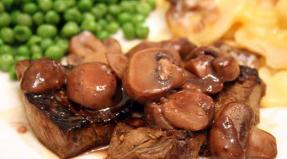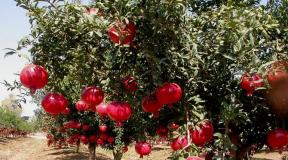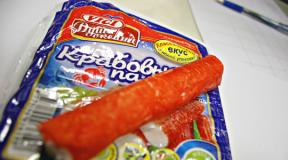Types of Italian restaurants. An original and beautiful name for a cafe - the best options
In their reviews of the Don Giulio pastry shop that has recently opened in Moscow, the authors never tire of praising the local risotto in a deep plate, minestrone, meat snacks and other Italian dishes. There is only one "but", in traditional Italian pastis, risotto, meat and soups should not be served.
Let's take a look at the classification of Italian establishments, find out how agriturismo differs from an ordinary restaurant, what Tavola Calda is, and what should actually be served in pasta.
TRATTORIA
Trattoria, in the understanding of Italians, is a home-cooked restaurant, that is, they serve what their mother and grandmother cook, which means that the menu should contain a complete list of Italian dishes with obligatory snacks (antipasti), soups, first courses: pasta and risotto, as well as hot - meat and fish.
OSTERIA
Osteria are of two types. The first is a liquor store with bar functions. Of course, this institution is not so much about food as about drinking, it is in osteria that you can taste the best wines not only of the province of Italy in which you find yourself, but also of other regions of the country.
But in terms of food in such an osteria, you really don't walk around, as a rule, there are local types of prosciutto and cheeses, sandwiches, in a word, cold snacks. The second type - osteria-restaurants, open in the evening, in fact, these are ordinary restaurants, but with an emphasis on a rich selection of wines; open mainly in the evening.
AGRITURISMO
A restaurant on a subsistence farm, sometimes with a hotel where you can stay overnight. The peculiarity is that food in such a restaurant is prepared from those products that are produced on the owners' farm, therefore in the vicinity of the agriturismo you can often see local cows, goats, chickens and other animals.

Photo: agriturismo in the Prosecco hills
Usually they are located not in cities (there, you understand, you cannot open a farm there), but in the suburbs. For visits, they are often open only on weekends; on weekdays, the owners are busy at the farm. Italians' favorite places to meet for Sunday lunch with their family.
GASTRONOMIA
A shop where you can buy not only cheeses or prosciutto from local producers, but also ready-made meals such as baccala, salads, marinades, and so on.

In the photo: gastronomy in Vicenza il Ceppo
As a rule, it is equipped with a full-fledged kitchen where food is prepared, and also tables are often set in the institution where you can have a snack from the range of gastronomy and drink a glass of wine.
PASTICCERIA
The most correct characteristic of this type of establishment is a café-pastry shop, where Italians come to have breakfast with a brioche (croissant) and a cup of aromatic coffee. In addition, pastries sell sweets, pastries, cakes and often ice cream, and in the afternoon, Italians often drop in here for an aperitif.

Photo: Pastures of San Marco in Padua
Another feature of the pastures is that all the baked goods and sweets here are home-made, that is, they are prepared. And, importantly, on Mondays, most pastures in Italy have a day off.
TAVOLA CALDA
Eatery that can be described as a bar with hot snacks. It is worth going here if you have forgotten about the working hours of Italian restaurants, everything in the area is closed, but you still really want to eat. In addition to sandwiches and salads, there is usually a simple pasta from a nearby store and lasagna, wine is also served, but often the simplest.
TAVOLA FREDDA
The place, whose menu includes sandwiches, salads, sandwiches, inexpensive beer and plain wine, exists for those who want to kill a worm on the run.
JELATERIA
An ice cream parlor selling the famous Italian gelato. It's easy to identify good gelateria - there is always a line of locals to enter.

It is usually not accepted to eat in the institution - you take ice cream to take away and eat it, sitting on the steps of the nearest church / palazzo, or right during a walk.
ROSTICCERIA
The peculiarities of these establishments are fast food, very low prices and very high speed of service. Most often, the restaurant is arranged according to the same principle as the classic catering: ready meals are laid out at the counter, guests collect food on a tray and pay for everything at the checkout. As a rule, chicken dishes are always on the menu.
MENSA
A canteen for students or employees of a company. Tellingly, the food is usually quite decent there, it happens that it is many times better than in Tavola Calda, and, of course, very inexpensive.
PANIFICIO
The store that sells freshly baked bread is recommended to stop by for fresh pastries for breakfast on Mondays when the pastries are closed.

MAZO (MASO)
A restaurant on the farm where cattle are raised for meat and speck is produced. Spek, bacon and prosciutto are served throughout the day, hot dishes are served in the evening and lunch hours (from 12.00 to 14.30 and after 18.30). Opened mainly in remote locations from the city, it is recommended to visit meat-eaters-lovers.
PROSCIUTTERIA
The name speaks for itself, the menu includes all kinds of prosciutto: from classics to prosciutto made from wild boar and salami, as well as sandwiches with all of the above and inexpensive wine.

Pictured: prosciutto in prosciutto San Daniele
MALGA
Restaurants opened at small cheese-making farms. As a rule, all local cheeses are soft and made from cow's milk, in addition to cheeses at lunchtime and in the evening, hot dishes of the region are served here.

In the photo: Malga in the vicinity of Trento
Malga is open mainly in mountainous areas, we advise raw food eaters to drop in here.
ANGURIARA
Summer cafe selling fresh fruit (from the word anguria - watermelon). In addition to watermelon cut into aesthetic pieces, the menu contains all seasonal fruits and even exotic from some Thailand: rambutan, lychee or mangosteen.
BIRRERIA
The Italian analogue of an English pub, yes, today in Italy beer is no less popular than wine, and local producers are as sophisticated with it as Czechs or Belgians. Of the food on the menu, as a rule, cold cuts and cheeses, as well as the obligatory sausages, sometimes, however, grilled meat is also served in the birreria.
BACARI
Establishments of this type can be found exclusively in Venice, the name comes from the word "chat", as a result, these are bars with wine and small snacks (sandwiches, salads and cold dishes).

It is supposed to eat and drink while standing, as a rule, there are no seats in bakari, but these are almost the only places in Venice where you can have a budget snack. Sometimes a restaurant is opened with bakari, as a rule, it is located in the next hall.
OSMIZZA
Establishments of this type can only be found in the Friuli Venezia Giulia area. They are not open all the time, and indeed the word "osmitstsa" is translated as "eight". Basically, the Osmizians are the following: producers from local farms rent premises for a while, where they serve eggs from their farm, prosciutto, cheeses, local pastries and wine.

Open throughout the day, guests consume food in a civilized way, that is, sitting at tables, but forks are often not given out, so you should eat with your hands. The fact that somewhere the osmizza has opened can be learned either, or in the old fashioned way, carefully examining the pillars or lanterns in the area. In the event that the osmizza is open, a broom is hung on a lantern or post with an indicator - in which direction to go or go.

By the way, this is how people were informed about the Osmits in the old days, but even now, although everyone uses the Internet, following the green brooms according to the signs is also a popular entertainment.
Did you like the material? Follow us on facebook
Yulia Malkova- Yulia Malkova - founder of the site project. In the past, the chief editor of the internet project elle.ru and the chief editor of the website cosmo.ru. I'm talking about travel for my own pleasure and the pleasure of my readers. If you are a representative of hotels, tourism office, but we are not familiar, you can contact me by email: [email protected]
To make a restaurant profitable, you need to consider everything from interior design to menu design. Name plays an important role in the process of starting a business. It should attract the attention of guests, make them want to visit the establishment.
How do you create an attractive title? How do you come up with a restaurant name in accordance with the cuisine and concept? Read about the naming rules right now!
How to come up with a restaurant name: basic requirements
To develop a name, you can contact marketers. Professional help is expensive, but you get ready-made options that fit your basic needs.
To independently develop a concept for an establishment, come up with a name for a restaurant and a menu, use these tips:
- Use simple words that are easy to remember, write and pronounce.
- Analyze which associative row which brings up the title. Unpleasant associations will cause rejection of potential visitors. The complete absence of associations will not make a profit.
- Try to convey the main idea, concept of restaurant... You can rely on the style of the interior, the nationality of the cuisine, the location of the institution.
- Remember about euphony... The name, pleasant to the ear, is easy to remember and evokes positive emotions
- Be original... Check your chosen names for uniqueness.
How to name a restaurant beautifully and where to get inspiration
How can you name a restaurant based on the menu or cuisine? Can't think of it? Search for examples of the world's best restaurateurs. This will help you broaden your horizons and give you an interesting idea.
How to name a European restaurant: what to look for
European cuisine is a fairly broad concept. Typically, the menu includes continental breakfasts, Italian pizzas and pasta, German strudels, and French desserts. Therefore, you will not be able to rely on the peculiarities of the kitchen. You need to determine how your establishment differs from competitors.
Most modern restaurateurs prefer to call the restaurant in English. This will help expand your target audience. For instance, "Grand family", "Real Food Restaurant".
How to name an Italian restaurant: examples from the homeland of pizza
To come up with an Italian-style restaurant name, first decide on the format of the establishment. There are different types of Italian restaurants: hostaria, osteria, taverna, trattoria, enoteca.
If you do not know what to call an Italian restaurant, try to combine the designation of the type of establishment with the name of the city, Italian surname, literary character. For example, a premium-class restaurant styled as a country house might be called "Taverna Rivoli"(Rivoli is a small Italian town in the province of Turin).
One of the famous institutions in Italy - "Osteria francescana"... Osteria is a wine restaurant with light snacks, francescana means "Franciscan". A similar example - "Enoteca Pinchiorri".
How to name a French restaurant with Parisian finesse
In France, there is no problem with the name. It is often enough to combine the word "restaurant" with the owner's surname. To name a French restaurant in Moscow on such a principle will not work. Another option is to use the name of the restaurateur in a French manner. For instance, "Restaurant d'Hélène".
When choosing the name of the establishment, consider its positioning. Option for a family establishment with a menu for children "Le petit prince"... an establishment with a large assortment of drinks "Aquarius"(translated "Aquarius") If you position a restaurant with a wide range of wines, a suitable name - "Château du vin".
How to name a Russian restaurant and attract attention
To name a restaurant with national Russian cuisine attractively, it is necessary to emphasize its belonging to Russian culture. Try to strengthen your positive associations, because most of the visitors to national restaurants in Moscow are tourists.
Suitable names - "Russian Sun", "Dr. Zhivago "... The names of the great Russian writers and poets are often used in the names of restaurants - "Pushkin", "Chekhov".
To stand out from the competition and attract visitors, use Russian words that have no analogues in the West. For instance, "Vatrushka", "Izba".
How to name a Russian restaurant and attract tourists? Write the title in transliteration - "Zabava", "Ded Mazaй".
.
Attract visitors by reflecting the menu assortment in the title. Not sure what to name a butcher restaurant? The answer lies on the surface - "Meat & Vine", "Hunter's Prey", "Much Meat".
Experiment with titles. Try to convey the peculiarities of the kitchen, the atmosphere, the style, the emotions that you want to see from the guests. Write out all the options, make associative chains, cut off everything that is banal and too complicated.
Italian is known as the language of love, but it is also the language of food. If you are going to spend time in Italy, then you just need to learn the words related to food and drink. And if you're looking for authentic Italian food, then you better steer clear of plaid tablecloths, colorful signage and menus with English translations or pictures. It won't be easy, but our tips will help you make your stay unforgettable.
Types of Italian restaurants - Ristorante, or osteria
In dictionaries, these terms may have a common English translation, but there is an important difference between them. Ristorante is the most formal, upmarket of the three, with wait-and-see service, while trattoria is a less formal establishment, usually a family run. And the last - the tavern is the most budget option.

Tavola calda
literally translates as "hot table". This is a cafeteria, but not quite usual for us. This is a great way to dine without spending too much: there will be a selection of hot dishes that are almost always prepared on the same day and reheated to order. These are usually pasta, meat dishes, salads, and possibly pizza and pastries.

Bar, caffè
In general, they are the same thing, but sometimes you can see the name "cafe bar". They often stay open late and serve alcohol and an aperitif in the evenings, but unlike bars in the English-speaking world, this is the place to grab coffee and eat buns during the day.
The service system is different here. Unlike a ristorante or trattoria, where you have to call the waiter to ask for the bill, since it is considered rude to interrupt your lunch, even if you have already finished eating, then in a cafe you pay first, then receive a check, and then food.

Pizzeria (al taglio) | Pizzeria (by the slice)
In the first case, you will sit down and get a full pizza, and in the second case, you will be given a slice for just a couple of euros. And it should be noted that take-out food is much less popular in Italy than in other countries. In particular, not all cafes offer this service, so be sure to ask if you can get something to take out.

Primo / secondo | Main course
The difference between an Italian first and second course is not the same as in English. So, in Italy, the first will be served with pasta, risotto, broth, and the second - a meat dish or seafood dish. And often the second course is served without vegetables or side dishes. You can order both the first and the second, or you can choose one thing - this is considered the norm.

Al tavolo, al bar
Usually these terms are found on the menus of cafes and bars. Depending on whether you are standing at the bar or sitting at the table, the payment for the order will also depend.


Often, visitors fall for the bait without reading the fine print on the menu, which states that bread and breadsticks cost money in Italy. There is a price per person, usually 1-2 euros. Well, the phrase fatto / a / i / e "in casa" will serve as evidence that the dishes you will be served will be fresh, not frozen. Naples in Slavic
The best restaurants in Rome. Video from 5 stars - all about tourism
A good restaurant name is one of the most important keys to success. Although many entrepreneurs pay little attention to this issue, practice proves how important it is to choose the right name for your business. Experts recommend that you first familiarize yourself with the recommendations of professionals in the field of naming (the process of creating an original name), and, if necessary, contact them for help.
What is the name of the restaurant?
It is quite possible to name the restaurant correctly on your own. There are not so many basic rules for choosing an effective name, it is not difficult to understand and remember them, it will take very little time. More effort will be needed directly to create the original name, because it is necessary that it meets many criteria.
What is the name of the restaurant? The name should:
- be unique;
- be euphonious, easy to pronounce and remember (long names are harder to keep in mind and use them to create a holistic image that will be associated with a restaurant);
- correspond to the concept of the institution;
- be spelling correct;
- contain a message to a potential customer that will make him pay attention to a specific restaurant, rejecting the proposals of competitors;
- evoke positive associations, emotions, do not create false expectations, do not have unwanted coincidences.
Algorithm for choosing a name for a restaurant:
- It is necessary to determine the basic value for your business, to put an emphasis on what will be profitable to position it, to distinguish it from competitors' offers (delicious dishes, loyalty to traditions, family comfort, etc.).
- It is important to distinguish the institution against the background of other restaurants and attract regular customers to yourself, to promote your service with high quality (including on the Web) and advertise it. This will help the creation of a unique name. If it is similar to the existing one or consonant with it, it will significantly complicate online advertising and lead to huge traffic losses.
Advice: When promoting your website dedicated to the activities of a restaurant, it is worth remembering that the competition in search, which is carried out by potential customers using the Internet, is won by the one who pays maximum attention to optimizing the resource. And a unique name is one of the most important components of a successful result.
- The title should contain some value to the target audience. For example, for lovers of home cooking, a cozy atmosphere and simple tasty dishes are important, and a name in French will alienate them more than interest them.
- It is necessary to choose the optimal format for the name - we write in Cyrillic or Latin. The last option is most often used if they want to stand out from competitors, to focus on foreign cuisine, innovative recipes. But the name in Cyrillic will better complement the image that will be formed in the mind of the client, and will be associated with a particular institution, or rather, indicate its geographical feature.
- We test the effectiveness of the chosen name, for example, through a survey.
- We check if the chosen name is not used by someone, perhaps it is no longer unique. To do this, it is worth using the federal resource of the Unified State Register of Legal Entities on the FTS website. If the name has already been patented, you can modify it, if you wish, buy it from the previous owner, or, if the registration period comes to an end, just wait and register it for yourself right away. If necessary, the restaurant owner is better off using the services of a patent attorney.
In any case, you should always remember one of the main rules of naming (the process of creating a name) - the name of a company or product, in our case, a restaurant, becomes successful and recognizable only when there is a high-quality product or service behind it.
Restaurant name - examples
It is quite possible to choose beautiful names of restaurants on your own. If you devote a minimum of time to preparation and follow a few requirements, you can come up with the right name for the institution without the help of professionals and unnecessary financial spending.
The names of cafes and restaurants can be chosen based on different criteria:
- emphasis on the specifics of the services provided, taste - "Restaurant", "Meat and Wine", "Chalice of the World", "Steakhouse Premier", "Brizol" (if there is a dish of the same name in the menu), "Jam", "Vanilla" ;
- a reference to geography (but it is necessary to maintain harmony between the name and the concept of the institution, it should be related to the signature dish, menu format, decoration style, atmosphere in the institution) - "Tokyo", "Bellagio", "Greek Food", "Florence", Continental, Restaurant on Bogdanka, House of the Forester, Belogorye, White City, Provence, Greenwich;
- surname, first name (they are often played up and modified - "Pushkin", "Chuck Norris", "Potapych");
- the names of mythological, literary characters, places (they should be used with caution) - "Aurora", "Eden", "Olympus", "Alice in Wonderland", "Soprano", "Shambhala";
- an indication of the uniqueness of the establishment - "Mezzanine" (the word means "superstructure", it can be considered as an option for a restaurant that is located on the upper floors, where there are panoramic windows in a loggia built at a height), "Breaking Bad" (for example, if the establishment created in the style of the series Breaking Bad), Paprika, Pastila, Rendezvous, Tower, Stove;
- neologisms (new words) - "Tau", "Icebeerg";
- the use of foreign words is a load. Genatsvale, Italian. Forno a Legna, La Terrazza, eng. "Hartong", "Pret A Manger" ("the meal is served");
- Cyrillic graphics or Latin letters “Gusto Latino”, “Time Out”, “Samovar”, “Bulvar”, “Veranda”;
- use in the name of the components of different language systems - "PEREC", "People-restaurant".
What shouldn't you name a restaurant?
When creating a name for a restaurant, there are a few things to keep in mind. We recommend that you pay attention to the following approaches and do not use them:
- direct names of objects, processes, including in a foreign language - "Soup", "Food", "Valenok", "Beriozka", "Barashka", "Mamalyga", "Vinazh 77";
- words, phrases that cause unpleasant associations and emotions, those that can be interpreted in two ways - "Mice", "Horseradish", "Travel bag of a pregnant spy", "East Siberian Express";
- commonplace words and expressions - "Merchant's meal", "Empire of style", "Peace";
- difficult-to-pronounce names, sounding discordant, thoughtless neologisms, combinations of words - "Vkusnoteyevs", "Tea Merchants Association", "Pub Lo Picasso", "Cook'kareku", "Carrifan", "Potato", "Mosburg", "CookBarra", " Scrocchiarella "," Erwin. RiverMoreOcean "," A.V.E.N.U.E. "," B.I.G.G.I.E ";
- it is not recommended to use personal names, you should be careful to ascribe the letter "b", the article "The", this is not always appropriate - "Peter", "Svetlana", "Eliza", "Alexander" "The Garden", "The Podwall", Cupcake in the City;
- ambiguous expressions, phrases, as well as those that can be misleading - "Oh, everyone!"



















